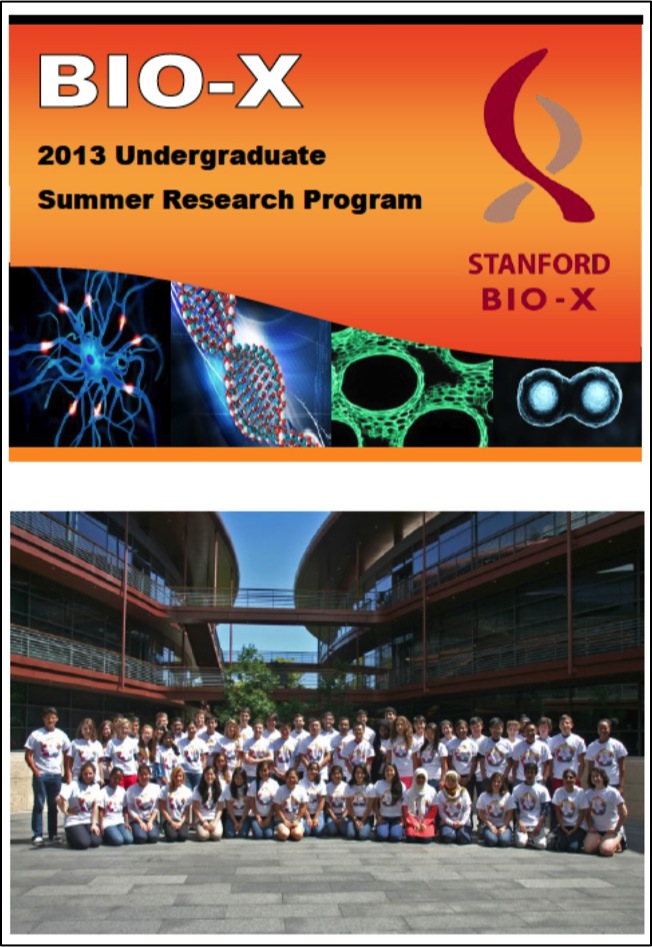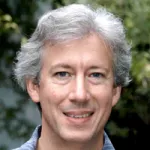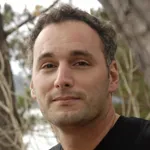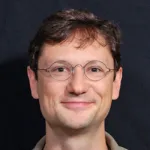
Welcome to the biweekly electronic newsletter from Stanford Bio-X for members of the Bio-X Corporate Forum. Please contact Dr. Hanwei Li, the Bio-X Corporate Forum Liaison if you would like to be added or removed from this distribution list, or if you have any questions about Stanford Bio-X or Stanford University.
Highlights
** On October 9, 2013, Bio-X celebrated the 10th Anniversary of the James H. Clark Center, the hub of Bio-X. Check out CLARK CENTER @ 10X as well as the Bio-X Timeline over the last 15 years!!
** Check out the article by Stanford President John Hennessy in the Nov/Dec 2013 issue of the Stanford Magazine on Bio-X and the Clark Center, "A Cauldron of Innovation".
Seed Grants
**UPDATE: BIO-X HAS 22 NEWLY AWARDED IIP SEED GRANT PROJECTS FOR ROUND 7 in 2014!! Click on the link to check out the project descriptions and read on to learn more about this round!
 SEED GRANTS FOR SUCCESS - Stanford Bio-X Interdisciplinary Initiatives Program (IIP)
SEED GRANTS FOR SUCCESS - Stanford Bio-X Interdisciplinary Initiatives Program (IIP)
The Bio-X Interdisciplinary Initiatives Program represents a key Stanford Initiative to address challenges in human health. The IIP awards approximately $3 million every other year in the form of two-year grants averaging about $150,000 each. From its inception in 2000 through the fifth round in 2010, the program has provided critical early-stage funding to 114 different interdisciplinary projects, involving collaborations from over 300 faculty members, and creating over 450 teams from five different Stanford schools. From just the first 5 rounds, the IIP awards have resulted in a 10-fold-plus return on investment, as well as hundreds of publications, dozens of patents filed, and most importantly, the acceleration of scientific discovery and innovation.
This year is the 7th round of the Bio-X IIP Seed Grants Program, and Bio-X has just announced it's 22 newly awarded projects selected from 142 Letters of Intent (LOIs)! This has been the largest number of LOIs that Bio-X has received. Please go here to check out the newly awarded projects. Competition was intense, and the selection criteria included innovation, high-reward, and new interdisciplinary collaborations. (To view the 142 other IIP projects that have been funded from the previous 6 rounds, please click here.)
We are cultivating and are highly successful in building meaningful collaborations with numerous corporate colleagues. New collaborations through our seed grant projects are highly encouraged. To learn about how to get involved, please contact Dr. Hanwei Li or Dr. Heideh Fattaey.
**On August 27, 2014, over 300 people attended Bio-X's latest Interdisciplinary Initiatives Seed Grants Program Symposium. There were 8 different oral presentations from faculty members who were awarded Bio-X Seed Grants on the progress that they have made with the funding towards their projects. In addition, Bio-X had its largest poster session ever with 167 posters presented during the reception of the symposium! If you'd like to learn more about any of the projects that were presented during the entire symposium, please contact Dr. Hanwei Li with your questions.
Fellowships
Every year, graduate students and postdoctoral scholars of Bio-X affiliated faculty are highly encouraged to apply for the Bio-X Fellowships, which are awarded to research projects that are interdisciplinary and utilize the technologies of different fields to solve different biological questions. Students are encouraged to work collaboratively with professors of different departments, thus creating cross-disciplinary relationships among the different Stanford schools. Our fellows have conducted exciting research, resulting in publications in high-impact journals and have been offered excellent positions in industry and academia.
To date, with the 19 new awardees of 2014, Stanford Bio-X has a total of 173 Fellows.
You can view the numerous Fellowship projects that have been awarded over the years as well as oral presentations from previous symposiums here.
 BIO-X UNDERGRADUATE SUMMER RESEARCH PROGRAM
BIO-X UNDERGRADUATE SUMMER RESEARCH PROGRAM
The Bio-X Undergraduate Summer Research Program supports undergraduate research training through an award designed to support interdisciplinary undergraduate summer research projects. The program is an invaluable opportunity for students to conduct hands-on research, learn how to carry out experiments in the laboratory, and develop the skills to read and analyze scientific literature. This program is eligible to Stanford students who want to work in the labs of Bio-X affiliated faculty.
To date, with 65 new awardees from 154 applications submitted this year, 306 students have been awarded the opportunity to participate in the Bio-X Undergraduate Summer Research Program.
Participating undergraduates are also required to present poster presentations on the research that they've conducted during the program. Please click here for title lists of past posters that our undergraduates have presented.
Many fruitful collaborations and relationships have been established with industry through fellowships. Please contact Dr. Hanwei Li or Dr. Heideh Fattaey if you'd like to learn more about how to get involved with these fellowship programs.
News

 Stanford scientists seek to map origins of mental illness and develop noninvasive treatment
Stanford scientists seek to map origins of mental illness and develop noninvasive treatment
Bio-X Affiliated Faculty Amit Etkin & Stephen Baccus
Bio-X NeuroVentures Project: Ultrasonic Neurostimulation: A new Approach to Control and Study the Molecules, Circuits and Actions of the Brain
Over the years imaging technologies have revealed a lot about what's happening in our brains, including which parts are active in people with conditions like depression, anxiety or post-traumatic stress disorder. But here's the secret Amit Etkin wants the world to know about those tantalizing images: they show the result of a brain state, not what caused it. This is important because until we know how groups of neurons, called circuits, are causing these conditions – not just which are active later – scientists will never be able to treat them in a targeted way. ... The new initiative, called NeuroCircuit, has the goal of finding the brain circuits that are responsible for mental health conditions and then developing ways of remotely stimulating those circuits and, the team hopes, potentially treating those conditions. The initiative is part of the Stanford Neurosciences Institute's Big Ideas, which bring together teams of researchers from across disciplines to solve major problems in neuroscience and society. Stephen Baccus, an associate professor of neurobiology who co-leads the initiative with Etkin, said that what makes NeuroCircuit a big idea is the merging of teams trying to map circuits responsible for mental health conditions and teams developing new technologies to remotely access those circuits. ... The group has been working together for about five years, and in 2012 got funding from Bio-X NeuroVentures, which eventually gave rise to the Stanford Neurosciences Institute, to pursue this technology.
 Of mice and men: Researchers compare mammals’ genomes to aid human clinical research
Of mice and men: Researchers compare mammals’ genomes to aid human clinical research
Bio-X Affiliated Faculty Michael Snyder
For years, scientists have considered the laboratory mouse one of the best models for researching disease in humans because of the genetic similarity between the two mammals. Now, researchers at the Stanford University School of Medicine have found that the basic principles of how genes are controlled are similar in the two species, validating the mouse’s utility in clinical research. However, there are important differences in the details of gene regulation that distinguish us as a species. “At the end of the day, a lot of the genes are identical between a mouse and a human, but we would argue how they’re regulated is quite different,” said Michael Snyder, PhD, professor and chair of genetics at Stanford. “We are interested in what makes a mouse a mouse and a human a human.” The research effort, Mouse ENCODE, is meant to complement a project called the Encyclopedia of DNA Elements, or ENCODE, that began in 2003. ... “The mindset is when you compare things, it helps understand genome annotation,” said Mark Gerstein, PhD, the Albert L. Williams Professor of Biomedical Informatics at Yale University. “It’s making the mouse a more meaningful model organism.” Gerstein collaborated on previous ENCODE research but is not part of the Mouse ENCODE consortium, which is composed of researchers from more than 30 institutions. “At the end of the day, a lot of the genes are identical between a mouse and a human, but we would argue how they’re regulated is quite different,” Michael Snyder said. Snyder is a co-senior author of the main paper — published in Nature on Nov. 19 — that describes the overall findings of the project, and of two companion papers (one to be published in the same issue of Nature, the other published online Nov. 17 in the Proceedings of the National Academy of Sciences) that explain individual components of the project.

 A brain-imaging discovery by Stanford scientists resolves a century-old argument
A brain-imaging discovery by Stanford scientists resolves a century-old argument
Bio-X Affiliated Faculty Brian Wandell and Kalanit Grill-Spector
What started a few years ago as a brain-imaging study turned into a scientific mystery that eventually ended in the basement of Stanford's Lane Medical Library, within the pages of a book first published in 1881 and last checked out in 1912. That journey, published this week in the Proceedings of the National Academy of Sciences, revealed the long and contentious history of an otherwise innocuous tract of nerve fibers of the visual system, running from just below to just above the ear. It also revealed the many ways scientific knowledge has been gained and lost over the centuries, and in some cases written out of history through a combination of scientific in-fighting and, at times, poor record-keeping. The journey began when then-graduate student Jason Yeatman, co-first author of the recent paper, was carrying out brain-imaging studies to better understand how kids learn to read, in the lab of Brian Wandell, a professor of psychology. Yeatman noticed that all the brain images in his study contained a structure that didn't appear in any texts. Either he'd discovered a new brain pathway or someone else had discovered it first, but the discovery and researcher had been lost to history.

 Tumor suppressor also inhibits key property of stem cells, researchers say
Tumor suppressor also inhibits key property of stem cells, researchers say
Bio-X Affiliated Faculty Julien Sage & Marius Wernig
A protein that plays a critical role in preventing the development of many types of human cancers has been shown also to inhibit a vital stem cell property called pluripotency, according to a study by researchers at the Stanford University School of Medicine. Blocking expression of the protein, called retinoblastoma, in mouse cells allowed the researchers to more easily transform them into what are known as induced pluripotent stem cells, or iPS cells. Pluripotent is a term used to describe a cell that is similar to an embryonic stem cell and can become any tissue in the body. The study provides a direct and unexpected molecular link between cancer and stem cell science through retinoblastoma, or Rb, one of the best known of a class of proteins called tumor suppressors. Although Rb has long been known to control the rate of cell division, the researchers found that it also directly binds and inhibits the expression of genes involved in pluripotency. “We were very surprised to see that retinoblastoma directly connects control of the cell cycle with pluripotency,” said Julien Sage, PhD, associate professor of pediatrics and of genetics. “This is a completely new idea as to how retinoblastoma functions. It physically prevents the reacquisition of stem cellness and pluripotency by inhibiting gene expression.” Marius Wernig, MD, associate professor of pathology, said, “The loss of Rb appears to directly change a cell’s identity. Without the protein, the cell is much more developmentally fluid and is easier to reprogram into an iPS cell.” Wernig and Sage, both members of the Stanford Cancer Institute, share senior authorship of the study, published online Nov. 13 in Cell Stem Cell. Postdoctoral scholar Michael Kareta, PhD, is the lead author.
Events
| Cancer Biology Dec 2, 2014, 12 pm - 1:30 pm Beckman Munzer Auditorium, Stanford, CA "Functional Genomics of Cancer Progression Using Transposon Mutagenesis and Targeted Nuclease" Speaker: David Largaespada, PhD, Univ of Minnesota |
Bioengineering Dec 11, 2014, 11 am - 12 pm Clark Center S360, Stanford, CA Frontiers in Quantitative Biology Series Speaker: Tom Bernhardt, PhD, Harvard Med School |
Resources
| Stanford University |
| Stanford Bio-X |
| Bio-X Seed Grants The Stanford Bio-X Interdisciplinary Initiatives Program (IIP) provides seed funding for high-risk, high-reward, collaborative projects across the university, and have been highly successful in fostering transformative research. |
| Office of Technology and Licensing "Techfinder" Search the OTL Technology Portal to find technologies available for licensing from Stanford. |
| Stanford Center for Professional Development - Take advantage of your FREE membership! - Take online graduate courses in engineering, leadership and management, bioscience, and more. - Register for free webinars and seminars, and gets discounts on courses. |
| Stanford Biodesign Video Tutorials on how FDA approves medical devices A series of video briefs recently produced by the Stanford Biodesign Program teaches innovators how to get a medical device approved for use in the United States. This free, online library of 60 videos provides detailed information on the Food and Drug Administration regulatory process, short case studies and advice on interacting with the FDA. |
To learn more about Stanford Bio-X or Stanford University, please contact Dr. Hanwei Li, the Bio-X Corporate Forum Liaison, at 650-725-1523 or lhanwei1@stanford.edu, or Dr. Heideh Fattaey, the Executive Director of Bio-X Operations and Programs, at 650-799-1608 or hfattaey@stanford.edu.


